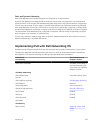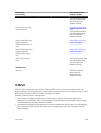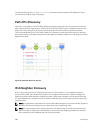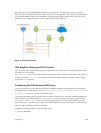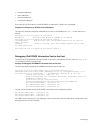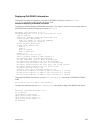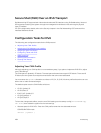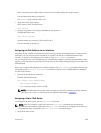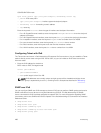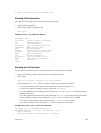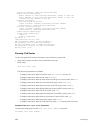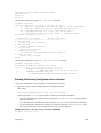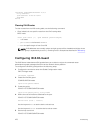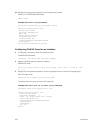
When not selecting the default option, enter all of the profiles listed and a range for each.
The total space allocated must equal 13.
The ipv6acl range must be a factor of 2.
• Show the current CAM settings.
EXEC mode or EXEC Privilege mode
show cam-acl
• Provides information on FP groups allocated for the egress acl.
CONFIGURATION mode
show cam-acl-egress
Allocate at least one group for L2ACL and IPv4 ACL.
The total number of groups is 4.
Assigning an IPv6 Address to an Interface
Essentially, IPv6 is enabled in Dell Networking OS simply by assigning IPv6 addresses to individual router
interfaces. You can use IPv6 and IPv4 together on a system, but be sure to differentiate that usage
carefully. To assign an IPv6 address to an interface, use the ipv6 address command.
You can configure up to two IPv6 addresses on management interfaces, allowing required default router
support on the management port that is acting as host, per RFC 4861. Data ports support more than two
IPv6 addresses.
When you configure IPv6 addresses on multiple interfaces (the ipv6 address command) and verify the
configuration (the show ipv6 interfaces command), the same link local (fe80) address is displayed
for each IPv6 interface.
• Enter the IPv6 Address for the device.
CONFIG-INTERFACE mode
ipv6 address ipv6 address/mask
– ipv6 address: x:x:x:x::x
– mask: The prefix length is from 0 to 128
NOTE: IPv6 addresses are normally written as eight groups of four hexadecimal digits. Separate
each group by a colon (:). Omitting zeros is accepted as described in Addressing.
Assigning a Static IPv6 Route
To configure IPv6 static routes, use the ipv6 route command.
NOTE: After you configure a static IPv6 route (the ipv6 route command) and configure the
forwarding router’s address (specified in the ipv6 route command) on a neighbor’s interface, the
IPv6 neighbor does not display in the
show ipv6 route command output.
• Set up IPv6 static routes.
IPv6 Routing
465



